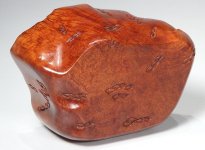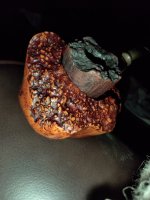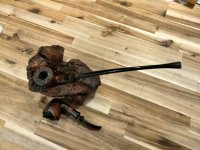Example 1:
 Example 2:
Example 2:
 Example 3:
Example 3:
As a younger man, I drooled over elegant pipes in well lit cases, and there was always that one stand out pipe prominently displayed in a gorgeous burl stand. My younger self admired the well north of $500 pipes and the stands themselves, which if not labeled "NFS" (not for sale), had price tags hovering between $150 and $300 as best I can recall. This was in 1999.
I've seen several on Worthpoint (examples above) and various other sites, but who made them? They all carry "MADE IN ITALY" stampings and are made from briar with natural plateau tops. Are they still being made, and who made them in the first place? Does anyone know?
Edit: As best I can tell, this is the only practical use anyone has found for most 'actual' 100 year old briar.
The rest of the pictures of the above stands.





 Example 2:
Example 2: Example 3:
Example 3:
As a younger man, I drooled over elegant pipes in well lit cases, and there was always that one stand out pipe prominently displayed in a gorgeous burl stand. My younger self admired the well north of $500 pipes and the stands themselves, which if not labeled "NFS" (not for sale), had price tags hovering between $150 and $300 as best I can recall. This was in 1999.
I've seen several on Worthpoint (examples above) and various other sites, but who made them? They all carry "MADE IN ITALY" stampings and are made from briar with natural plateau tops. Are they still being made, and who made them in the first place? Does anyone know?
Edit: As best I can tell, this is the only practical use anyone has found for most 'actual' 100 year old briar.
The rest of the pictures of the above stands.





Last edited:

























